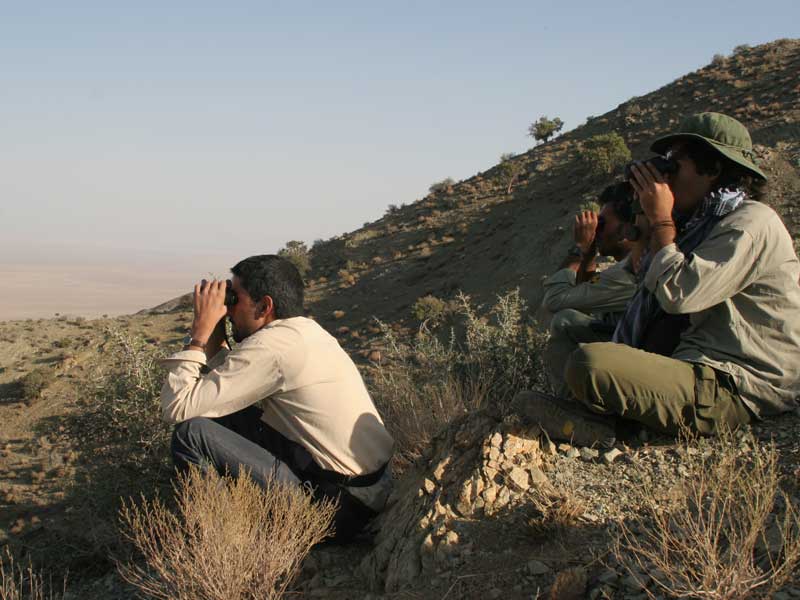Project Description
Project introduction
The Asiatic cheetah is one of the rarest Cat species in the world. Its population does not cross 100 collars and it can currently be found in Iran. Yazd and Semnan province’s dry and desert areas are some of the few habitats of this species that remain. However in the past the Asiatic cheetah had more dispersion throughout the country. Some of the threats to the Asiatic cheetah are listed below.
( Excessive hunting of the cheetah’s preys (especially gazelle
– Habitat destruction
(Direct hunting (usually to protect Livestock
-Road accidents
Since 2001 the Department of Environment, with the help of other international Wildlife conservation organizations, has started a project under the name “The Asiatic cheetah and ecosystem conservation project”. The goal of this project is to protect the remaining Asiatic cheetahs in the wild. In this regard observing the cheetah’s natural habitats has become very important. Bahram Gor protected area in the east of Fars province was one of this species’ former habitats. But it has been years that its presence hasn’t been reported there. The purpose of the” Feasibility of the presence of the Asiatic cheetah in the protected area of Bahram Gor” is to specify the last known state, of the species from 2005 to 2006 in the area.
Goals
The main goals of this project are listed below
-Preparing and collecting documents and evidence of the presence of the cheetah in the area
-Identifying the current threats to the Asiatic cheetah and its prey
-establishing an info bank containing reports about the cheetah and other carnivores and their prey in the area
-Targeted research about the cheetah, other carnivores and their prey
Time of the project
November 2005 to July 2007
Members
Arash Ghodosi- Taher Ghadirian- Hadi Fahimi _Field work
Seyed Mehdi Nabiian _Division Headquarters
Other colleagues
Hamed Moshiri- Ashkan Danesh- Hamid Khayatzade
Locations and project approaches
Bahram Gor protected area, Fars province
Bahram Gor protected area was a free zone in 1968. Since 1972, it has been under the control of the Department of Environment as a protected area, in Fars province. This area is of utmost significance due to the presence of one of the natural populations of Equus hemionus.
The Department of Environment reports indicate that the cheetah has been present in the area, and in the past few years the area has been one of this species’ favorable habitats. But since 2007 there has been no proof leading to the presence of the Asiatic cheetah.
This activity is the first serious step in identifying the presence of the species in the past years in the area. And there will be future programs to come. Educating the local community and the environmental guards in this field is one of the obligations in assuring the safety of the cheetah in the area. In this research the use of camera traps, speaking with the local community and investigating any sign of wildlife is to prove the presence or absence of the cheetah in the area.
Achievements
| Bahram Gor protected area in the past few years has been without doubt one of the cheetah’s natural habitats. But unfortunately there has been no report indicating the presence of the species in the area. The reason for this is the lack of a coherent system for registering the guards’ observations, insufficient education related to the importance of carnivore species, and the lack of an adequate identification related to the species. |
Because of insufficient number of camera traps, having no photos of the cheetah in the vast area it is not a surprise. And to achieve better results more cameras and more time is needed. Although there is no documented proof of the cheetah’s presence, and there are no photos taken, there are still reports of sightings by farmers and environmental guards. Comments about the certainty of the presence of the species, and estimating its population is still undoable. The cheetah is a known species to farmers and the environmental guards. In the past, there have been numerous sightings. It is most likely that the cheetah is present in the area but in smaller numbers and that it uses this area, as a passage to other habitats. According to the records and the documents, field research and examining the trace of other carnivores in the area by the experts in this association and the results it has gained by camera traps and the local communities comments and the environmental guards’ most recent reports in the area, chances of the cheetah’s presence in Bahram Gor protected area is high and the chances for its existence in the safe areas of the north and east parts are higher but require more completed research.







